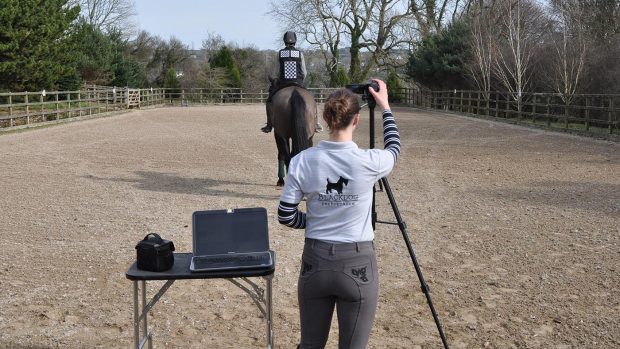What is upward fixation of the patella?
As the horse has evolved it has undergone a multitude of physical changes designed to help it survive. One such adaptation is the development of a locking mechanism in its stifle that keeps the hindleg in extension and allows the horse to rest while standing, with virtually no muscular effort.
This normal anatomical feature becomes abnormal only when the stifle inadvertently locks at the wrong time, or when the unlocking mechanism fails. When this happens it is known as a locking stifle or, more correctly, upward fixation of the patella (UFP).
UFP is the most common cause of stifle gait abnormalities, although it is not usually responsible for lameness. It tends to be seen mostly in young, immature horses and ponies, with Shetlands especially prone.
Why does it happen?
There are various factors that increase the chances of a locking stifle and from these it can be understood why it is recognised more in young, unfit horses or those that have suddenly had to come out of training and are perhaps on box rest, leading to a rapid loss of muscle condition and tone.
- Straight hindlimb conformation: typical of many ponies; the patella is already riding high in the trochlea, so the slightest bad step can allow inadvertent fixation
- Poor muscle tone: typical of young, immature horses; a loose, flabby quadriceps allows the patella to bounce around in the trochlea
- Poor condition: leading to weak muscles
- Poor co-ordination between stifle flexor and extensor muscles: associated with young animals in poor condition
- Hereditary factors: the inheritable nature of straight hindlimb conformation
- Trauma to the stifle: leading to loss of muscle tone and condition
Treatment options
Establishing a conditioning program aimed at increasing the level of fitness and strength of muscle tone, to include:
- trotting on soft ground in straight lines
- walking/trotting up and down hills,
- increasing the scope/variety of feeds
- worming
Injecting counter-irritants (blistering), such as an iodine- or steroid-based product, into and around the middle and medial patellar ligaments to make them thicken and shorten. This makes it less possible for the patella to become hooked up. The results are unpredictable, though, and there are possibly disastrous complications should synovial sheath structures be unwittingly involved.
Corrective shoeing with raised heels may help by limiting the degree of extension of the stifle joint, which sometimes causes locking.
Surgical treatments include:
- Medial patellar ligament desmotomy: cutting the medial patellar ligament through a small incision. This disrupts the patellar locking mechanism and was the surgery of choice until recently, due to the one in five risk of post-operative complications.
- Medial patellar ligament splitting: a relatively new technique that involves inflicting multiple incisions into the ligament, resulting in localised thickening and increased stability. Horses are encouraged to resume controlled exercise within days. Initial reports indicate a 95% success rate with no complications so far, although a possible muscle abnormality has been touted to explain the occasional poor response to surgery.
This veterinary feature was first published in Horse & Hound (15 March, ’07)



